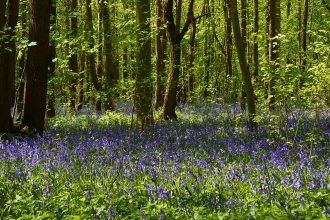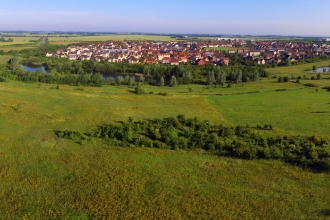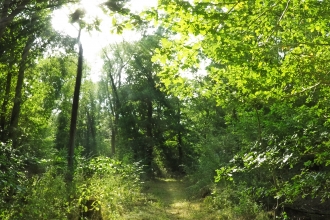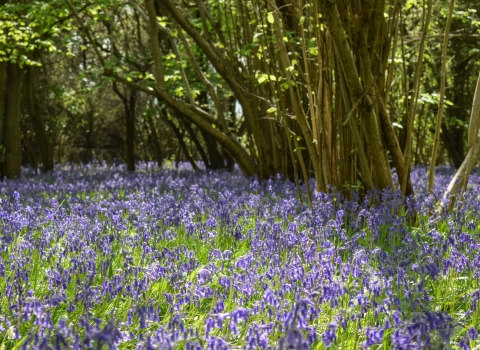Older than the Domesday Book
The West Cambridgeshire Hundreds are a collection of wildlife rich ancient woodlands in an area defined for over 1000 years by the old Anglo-Saxon regional divisions known as the Cambridgeshire Hundreds. Historical records show that some woods like Hayley Wood are older than the Domesday book and may go back much earlier. Our vision for this area is a landscape of connected woodlands where wildlife can move freely between.
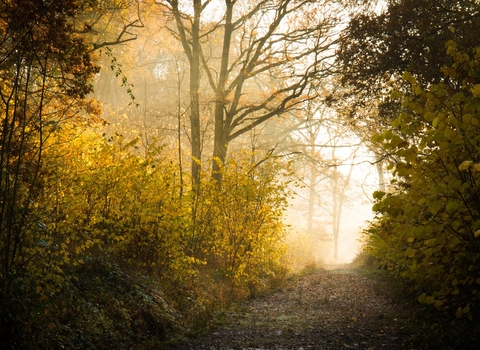
credit
| Waresley Wood by Sarah Niemann |
Prehistory: The Great Forest
1500 years ago West Cambridgeshire was still covered in prehistoric forest. This great forest had existed since the last ice age. While the first farmers had cleared other areas during the Neolithlic and Bronze ages, the heavy boulder clay soil of this area proved too difficult to farm and so the forest was left intact.
It was not until the Anglo-Saxon period that most of the forest was finally cut down. Local place names still mark this period. The suffix ‘ley’ means clearing in Old English. Hayley, Hatley and Waresley all mark some of the first cleared spaces in the prehistoric forest. However, some fragments of the prehistoric forest remained where the heavy soil was still too difficult to farm. The Domesday Book shows that the pattern of remaining woodland fragments in 1086 looked very similar to the pattern of woods that still exist today as ancient woodlands.
The West Cambridgeshire Hundreds are one of the few places you can still find oxlips in abundance.
Oxlips and bluebells
Every spring these remaining ancient woodlands are full of a beautiful sea of bluebells; one of the natural marvels of Cambridgeshire. English bluebells only grow in ancient woodlands and are a positive indicator of woodlands in good condition. Other wildflowers can also be found such as primroses, wood anemones, lesser celandines and goldilocks buttercups but the area is perhaps most famous for oxlips.
Oxlips are closely related to primroses and cowslips but are very rare in Britain. This area of Cambridgeshire is one of the few places they grow in abundance. Oxlips are a woodland flower and Hayley Wood is a key stronghold with millions of flowers each spring. They can also be found on other nature reserves too.
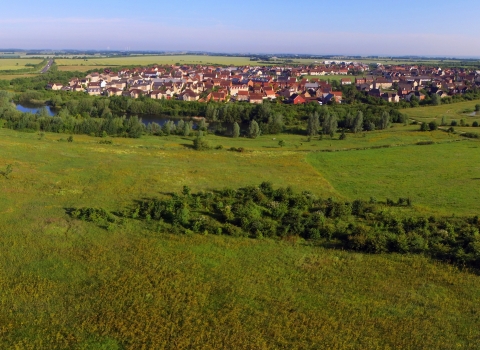
The Living Landscape
Wild habitats are expanding in this area for the first time since the days of the great prehistoric forest. The Wildlife Trust has worked hard to make sure that the new housing development at Cambourne incorporated a large and diverse nature reserve with woodlands, wildflower meadows and wetlands.
The project partners are working together to connect Cambourne and the remaining ancient woodlands with hedgerows, tree belts and flower-rich field margins, allowing wildlife to move freely between these habitats while improving the quality of life of the people who live here.
What is a 'hundred'?
A 'hundred' is an old regional division used by the Anglo-Saxons and other Germanic people. It’s thought the word 'hundred' came from an area of land that could supply 100 warriors in times of war. The old county of Cambridgeshire was still divided into hundreds until the nineteenth century, although its military origin had long since fallen into disuse.
A joint project
This is a joint project between the Wildlife Trust, local landowners, the Farming and Wildlife Advisory Group East, the National Trust, Natural England, the Forestry Commission, and the Woodland Trust. The support and enthusiasm of landowners is essential to the success of our work.
Scheme area: 20,000 Ha

